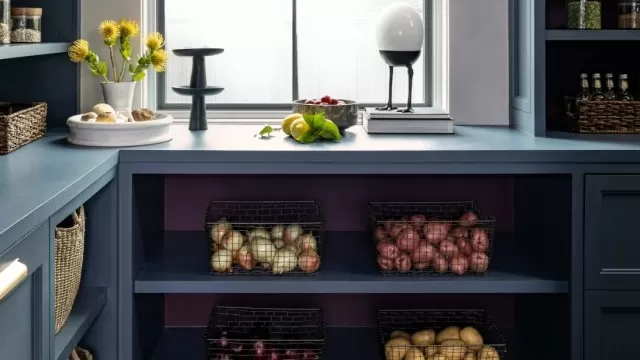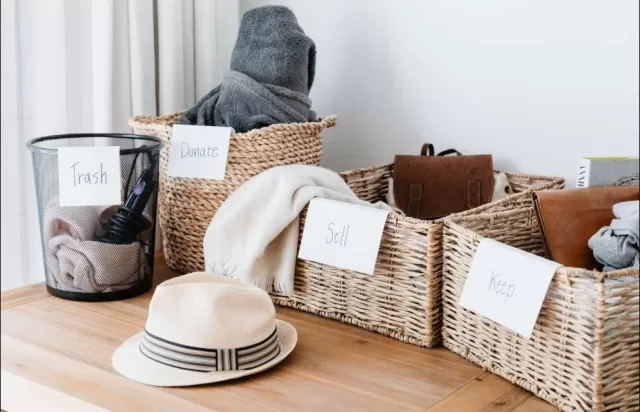While it may seem daunting to tackle all the clutter in your home at once, you can make significant progress by dedicating just 15 minutes to specific organizing tasks.
By breaking down the process into manageable chunks, you can gradually achieve a more organized and tidy living space.
The following ideas will guide you in conquering clutter room by room through 15-minute organizing sprints. By scheduling time for one or two tasks each day, you’ll steadily work towards the goal of creating a neat and well-organized home in a shorter amount of time.
Start by selecting a particular room or area of focus for each organizing sprint.
This could be anything from decluttering a closet or pantry to organizing your Home Office or tackling a cluttered bedroom. Set a timer for 15 minutes and dive into the chosen task with focused determination.
During these sprints, prioritize sorting, decluttering, and creating designated spaces for items.
Begin by assessing the area and identifying items that can be discarded, donated, or relocated to their proper places. Utilize storage solutions such as bins, baskets, or organizers to establish order and optimize space.
By dedicating a small portion of your day to these organizing sprints, you’ll gradually transform your home into a more streamlined and efficient living environment.
The key is consistency and breaking the process down into manageable tasks. Over time, the cumulative effect of these focused organizing sessions will lead to a more organized home.
Remember, the organization is an ongoing process, and it’s essential to schedule regular maintenance and follow-up sessions to sustain the results.
By adopting this approach, you’ll not only achieve a tidy home but also develop long-lasting organizing habits that will help you maintain a clutter-free living space in the future.
So, set aside a few minutes each day, commit to these 15-minute organizing sprints, and watch as your home becomes more organized, functional, and peaceful.
Best Declutter Home Fastly

Develop a Methodical Approach to Decluttering Your Home.
When it comes to decluttering your home, it’s best to avoid overwhelming yourself with long decluttering sessions.
Instead, adopt a strategy that allows you to make progress gradually. Start by selecting a specific room and focusing on one simple task at a time.
Set a timer for 15 minutes and use that time to accomplish as much as possible. If you can’t finish the task within the allotted time, either restart the timer or return to it later when you have more availability.
Gradually Address Clutter.
Identify the main source of clutter in your home, whether it’s magazines and mail, children’s belongings, or any other type of item that tends to accumulate.
Dedicate a few minutes each day or every few days to tackle this specific issue. As you go through the items, decide what can be discarded, recycled, donated, or stored elsewhere.
Then, sort the remaining items into categories and bring in organizers such as bins and baskets to keep them neatly contained.
Organize Pantry Items by Category.
Tackle the disarray in your pantry by focusing on a specific category of items that frequently causes chaos and difficulty in access.
Rather than attempting to reorganize the entire pantry system at once, concentrate on one staple category, such as baking supplies, breakfast foods, or snacks. Utilize bins and baskets to group similar items together and label your containers for easy identification when unpacking groceries.

Establish dining room Storage Solutions.
Undesignated space often leads to clutter in dining areas.
Instead of allowing miscellaneous items to accumulate on the table, create designated spots for specific items and establish destination stations. For example, if paperwork is a problem, set up a basket or tray sorting system to organize children’s papers, mail, and other documents.
If your kitchen or dining room serves as an office or homework station, gather desk supplies and store them in organizers within a cabinet.
Organize Hanging Clothes in Your Closet.
Bring order to your closet by organizing hanging clothes by types, such as dresses, shirts, and pants.
Add hanger tags to keep similar garments together and consider arranging clothes by season or purpose, such as “work” or “casual. ” In a child’s closet, organizing and labeling clothes by size becomes especially important as they rapidly transition from baby to toddler and big kid sizes.
Control Entryway Clutter.
Install hooks on a wall near your home’s main entry point to provide dedicated spots for jackets, hats, and backpacks.
Ensure that the hooks are at a suitable height for easy access, as children may otherwise end up leaving everything on the floor. Dedicate shelves for shoe storage and position a bench nearby to facilitate the process of putting shoes on and taking them off.
Maintain Tidiness in Workspaces.
Identify the specific area within your home office or workspace that tends to accumulate clutter and hinders your productivity the most.
If it’s your main desk drawer, invest in drawer dividers or trays to organize miscellaneous items that accumulate there. For issues related to excessive paperwork, allocate 10 to 15 minutes to sort through as much as possible.
If you have more time available, establish a filing strategy beforehand to ensure proper organization once the papers are sorted.

Conquer the Infamous Junk Drawer.
Take a few minutes to tackle the miscellaneous items that have accumulated in your junk drawer.
Empty the contents and determine which items should be stored elsewhere. Then, follow helpful tips and techniques from organizing experts to transform your junk drawer into an organized space.
Separate Bathroom Supplies.
Avoid losing track of extra bottles of shampoo and other toiletries under your Bathroom Sink by implementing professional organizer Laura Leist’s “shop from home strategy.
” Store excess products in a linen closet or a basket on a shelf and check your inventory before making additional purchases.
Optimize Spice Organization.
Rather than stacking spice jars in a cabinet where they are difficult to access, simplify your spice storage by labeling the lids and storing them in a drawer or basket.
Consider using a desk tray originally designed for office supplies to keep the spices standing upright, allowing for easy reading of the labels. To avoid a jumbled mess of different-sized spice containers, opt for refillable spice jars that promote a more streamlined and organized appearance.
*The information is for reference only.